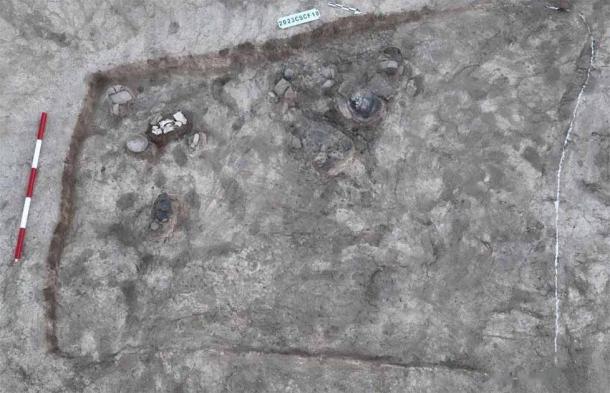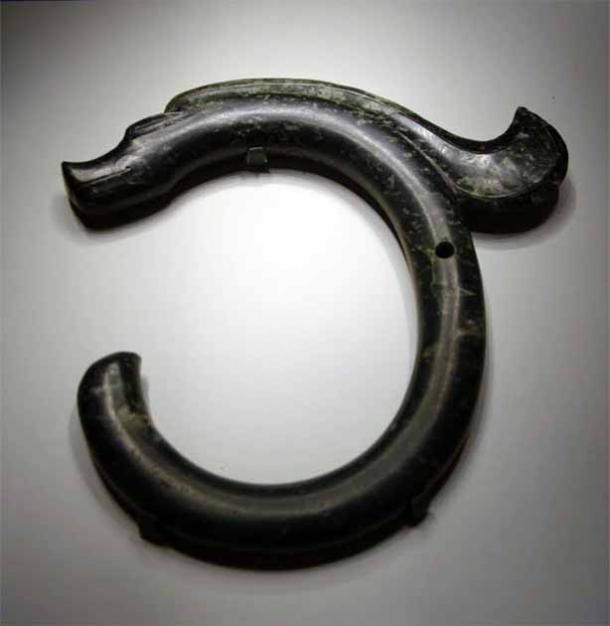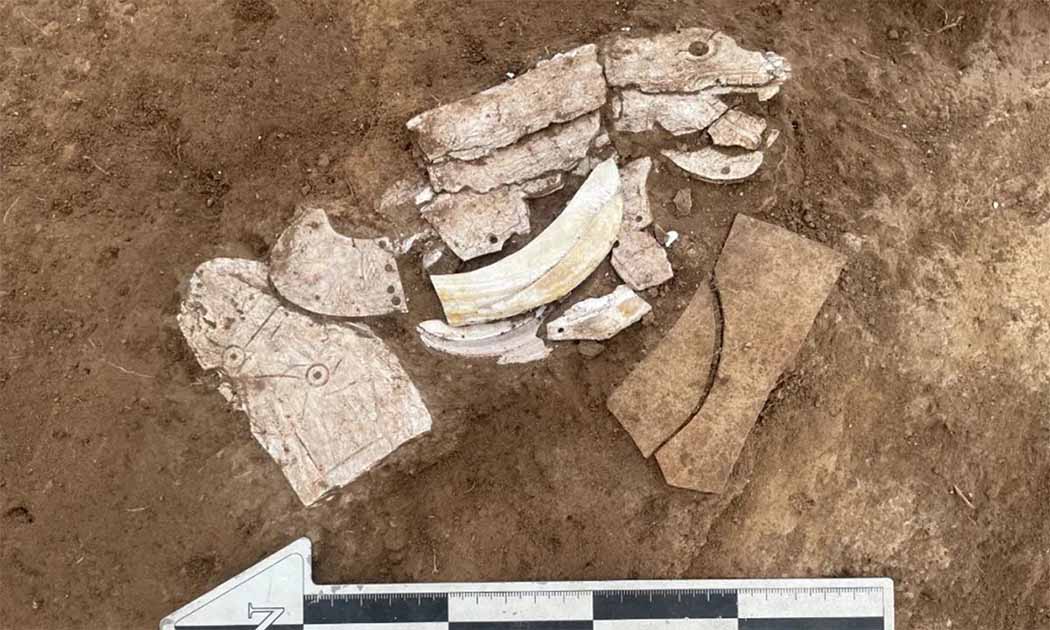Ancient Neolithic Dragon Made of Mussel Shells Unearthed in Inner Mongolia
Archaeologists have made an exciting discovery in North China’s Inner Mongolia Autonomous Region – an ancient dragon assembled from mussel shells. It predates one of the earliest dragon ornaments ever found, a C-shaped jade dragon from the Neolithic Hongshan Culture.
The Inner Mongolia Institute of Cultural Relics and Archaeology announced that the dragon discovery was made alongside pottery fragments in the remnants of a house at the Caitaopo archaeological site in Chifeng. The Caitaopo site has been particularly instrumental in shedding light on the Hongshan Culture, which thrived during the Neolithic era. The dragon and pottery fragments have been identified as belonging to the early period of the Hongshan Culture.
Historians trace the Hongshan Culture back to 4700-2900 BC. Amongst its numerous artistic legacies, it's particularly acclaimed for its intricate jade artifacts. However, the newly discovered mussel shell dragon introduces a fresh perspective to this cultural tapestry.

Songshan Painted Pottery Site in Chifeng, Inner Mongolia. Credit: Inner Mongolia Daily.
Dragon Ornament
Global Times China reported that the dragon ornament measures approximately 20 centimeters in length and, unlike the previously discovered C-shaped dragon of the Hongshan culture, this one is portrayed with a stretched-out form. It was assembled from several mussel shells that form its head, body, and tail. Its delicate carvings, particularly noticeable in the teeth and tail, are remarkably detailed.
According to Chinese news site, Sohu, the mussel ornament is the only representation of a stretched out dragon unearthed from the Hongshan culture.
- Relics from the Niuheliang Goddess Temple, the most mysterious site of the ancient Hongshan
- Prehistoric Disaster: Nearly 100 Bodies Found Stacked in Ancient House in China

The C-shaped jade dragon of Hongshan Culture (Prof. Gary Lee Todd / CC by SA 4.0)
The president of the Inner Mongolia Institute of Cultural Relics and Archaeology, Song Jinshan, highlighted the magnitude of the discovery. He expressed that the mussel shell dragon significantly enhances our comprehension of the dragon symbol during the early stages of the Hongshan Culture.
The dragon form has existed for thousands of years in China has a profound symbol of power, auspiciousness, and divine protection in early Chinese cosmology. The earliest representations of dragons found in the Hongshan culture laid the foundation for the rich and multifaceted dragon iconography that would come to permeate Chinese art, culture, and mythology for millennia to come.
Hongshan Culture
The Hongshan Culture, a beacon of the Neolithic era, thrived in the West Liao River Basin, Northeast China. Its archaeological footprint spans territories from the Inner Mongolia Autonomous Region to Liaoning, each site offering glimpses into a civilization marked by its unique cultural identity.
Historically, jade artifacts linked to the Hongshan Culture were predominantly associated with elite ceremonial locations. In contrast, this recent discovery hints at the spiritual inclinations of those residing in more modest settlements. Such findings accentuate the multifaceted nature of the Hongshan Culture, revealing deeper layers of their societal norms, beliefs, and rituals.
Top image: The Hongshan dragon made from mussel shells. Credit: Inner Mongolia Daily

















